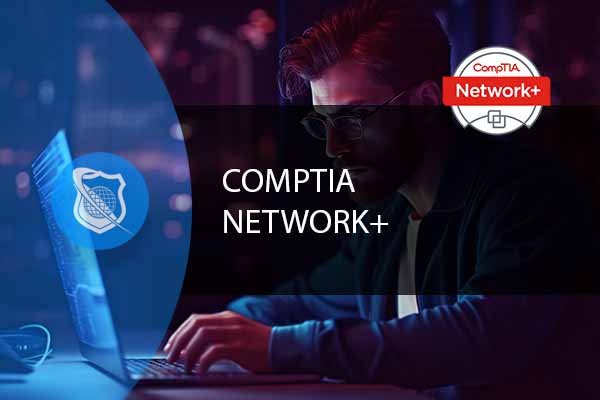Routing protocols are the unsung heroes of the internet, tirelessly working behind the scenes to ensure that data packets navigate the complex web of networks to reach their intended destinations. Among the myriad of routing protocols that exist, one stands out for its simplicity and efficiency: the Distance Vector Routing Protocol (DVRP). Understanding the principles and applications of the distance vector routing protocol is not just a theoretical exercise; it’s a practical necessity for anyone involved in the design, implementation, or management of networks. Whether you’re a seasoned network engineer or a newcomer to the field, this blog aims to provide a comprehensive guide to the Distance Vector Routing Protocol. Drawing on two decades of hands-on experience and expertise, we’ll delve into its inner workings, advantages, limitations, and real-world applications. So, let’s embark on this educational journey to demystify one of the foundational elements of networking.
What is Distance Vector Routing Protocol?
Definition and Basic Principles
The Distance Vector Routing Protocol (DVRP) is a dynamic routing protocol used in packet-switched networks. Its primary function is to determine the best path for data packets to reach their destination based on a set of criteria known as “distance metrics.” These metrics could be as simple as the hop count—the number of routers a packet must pass through—or as complex as latency and bandwidth considerations.
Historical Background and Evolution of Distance Vector Routing Protocol
Originating in the early days of computer networking, the Distance Vector Routing Protocol has a storied history. It was one of the first protocols developed for ARPANET, the precursor to the modern internet. Over the years, DVRP has undergone several iterations and improvements, adapting to the ever-changing landscape of networking technologies and requirements. While it may not be the newest or flashiest protocol on the block, its longevity attests to its robustness and reliability.
Comparison with Other Routing Protocols with Distance Vector Routing Protocol
At this point, you might be wondering how DVRP stacks up against other routing protocols, particularly Link-State protocols like OSPF and IS-IS. One of the most significant differences lies in their approach to gathering network information. Link-State protocols maintain a comprehensive map of the network, allowing them to calculate the shortest path using algorithms like Dijkstra’s. In contrast, Distance Vector protocols operate on a more localized level. Each router in a Distance Vector network only knows about its immediate neighbors and has no global view of the network topology. This localized approach makes DVRP simpler to configure and manage but also subjects it to certain limitations, such as the infamous “count-to-infinity” problem, which we will explore later in this blog.
Cisco CCNP Enterprise – ENCOR
Unlock your potential in enterprise networking with the Cisco CCNP 350-401 (ENCOR) online course. From network design to security and automation, master essential skills for the CCNP exam. Enroll now for flexible, hands-on training and elevate your career!
How Does Distance Vector Routing Protocol Work?
Understanding the Distance Vector Routing Protocol requires a grasp of some key terms and concepts that form its foundation. Let’s start by breaking down these terms.
Key Terms Explained
Routing Table
A routing table is essentially a data structure that resides in each router within a network. This table contains vital information about the best paths to various network destinations. It lists all known networks along with specific details on how to reach them—usually the next hop and the associated distance metric.
Distance Metric
The distance metric is a numerical value that represents the “cost” of reaching a particular destination. This cost could be measured in various ways, such as the number of hops, latency, or even bandwidth. The lower the metric, the more preferred the path.
Vector
In the context of DVRP, a vector is essentially the direction in which a packet should be forwarded to reach its destination. This direction is usually specified as the “next hop,” or the next router that the packet should pass through on its journey.
You may also like:
A Subnet ID is Calculated via a: A Comprehensive Guide
Distance Vector Routing: A Comprehensive Guide to Network Path Selection
Cisco EIGRP Configuration: A Quick How To
Cisco’s Guide on Distance Vector Routing Protocols
The Bellman-Ford Algorithm
At the core of the Distance Vector Routing Protocol is the Bellman-Ford algorithm. Named after its developers, Richard Bellman and Lester Ford, this algorithm is designed to find the shortest path in a weighted graph. In the context of DVRP, the algorithm works by continuously comparing distance metrics for all known paths to each destination. Each router updates its routing table based on the information it receives from its neighbors. If a shorter path is discovered, the routing table is updated accordingly, and this new information is propagated to neighboring routers during the next update cycle.
Algorithm Steps
- Initialization: Each router initializes its routing table with its directly connected neighbors and their respective distance metrics.
- Update Exchange: Routers periodically send their routing tables to their immediate neighbors.
- Table Update: Upon receiving an update, a router recalculates the shortest path to every destination using the Bellman-Ford equation:
New Cost to Destination = min(Old Cost to Destination, Cost to Neighbor + Cost from Neighbor to Destination)
- Convergence: This process continues until all routers’ tables no longer change, indicating that the network has converged.
Routing Updates and Convergence
One of the defining characteristics of a Distance Vector network is the periodic exchange of routing updates between routers. These updates are crucial for the network to reach a state known as “convergence,” where all routers have consistent and up-to-date routing information.
Update Mechanisms
- Triggered Updates: If a router detects a change in the network, such as a link failure, it immediately sends an update to its neighbors.
- Periodic Updates: Even if there are no changes, routers will send out their routing tables at regular intervals to ensure consistency.
Convergence Time
The time it takes for a network to converge depends on several factors, including the size of the network and the frequency of routing updates. While DVRP is generally slower to converge compared to Link-State protocols, techniques like route poisoning and hold-down timers have been developed to expedite this process and mitigate issues like routing loops.
All-Access Lifetime Library
A Distinctive Offering from ITU. Make a single payment and enjoy lifetime entry to our repository of more than 12,000 videos. Pay once, eliminate the need to purchase IT training in the future. Obtain all forthcoming and enhanced courses without any extra charges.
Advantages of Using Distance Vector Routing Protocol
Simplicity: Easy to Configure and Manage
One of the most appealing aspects of DVRP is its simplicity. Unlike more complex protocols like OSPF, which require a deep understanding of network topology and various tunable parameters, setting up a Distance Vector network is relatively straightforward. This makes it an excellent choice for network administrators who may not have advanced networking expertise but still need to set up a functional and reliable network.
Low Resource Requirements: Easy on Hardware
DVRP is not a resource-intensive protocol. It doesn’t require routers with high computational power or extensive memory. This makes it a cost-effective solution, especially for older hardware or budget-constrained environments. The low resource requirements also mean that DVRP is less likely to contribute to network latency, ensuring smoother data packet transmission.
Suitability: Ideal for Small to Medium-Sized Networks
DVRP is particularly well-suited for smaller networks or any setting where rapid convergence is not a critical factor. Its design principles make it efficient for networks with fewer routers, where the simplicity of setup and low resource requirements are more beneficial than rapid convergence and scalability.
Limitations and Challenges
Count-to-Infinity Problem: Slow Convergence
One of the most significant limitations of DVRP is the “count-to-infinity” problem. In large networks or those with unstable links, DVRP can take an extended period to converge, leading to inefficient routing and increased latency. Various techniques like route poisoning and split horizon have been developed to mitigate this issue, but they are not foolproof.
Routing Loops: A Persistent Challenge
Another challenge with DVRP is the potential for routing loops, especially during the network convergence process. These loops can lead to increased network latency and packet loss. While features like hold-down timers can help, they are not a complete solution.
Slower Convergence Times: Not Ideal for Dynamic Networks
Compared to Link-State protocols like OSPF and EIGRP, DVRP generally has slower convergence times. This makes it less suitable for highly dynamic networks where topological changes are frequent and rapid convergence is essential.
Applications of Distance Vector Routing Protocol
Small Office Networks
DVRP is often the go-to choice for small office networks where there are a limited number of routers and rapid convergence is not a significant concern. Its ease of setup makes it ideal for businesses without dedicated IT staff.
RIP and IGRP: Classic Implementations
The Routing Information Protocol (RIP) and Interior Gateway Routing Protocol (IGRP) are among the most well-known implementations of DVRP. RIP, one of the oldest routing protocols, is still widely used in smaller, more stable networks. IGRP, developed by Cisco, is a proprietary protocol that extends the capabilities of basic DVRP to offer more features and better scalability.
Emerging IoT Applications
With the rise of the Internet of Things (IoT), DVRP is finding new applications. Its low resource requirements make it suitable for IoT devices that have limited processing capabilities.
Best Practices for Implementing Distance Vector Routing Protocol
Implementing any routing protocol requires careful planning and execution, and DVRP is no exception. Here are some best practices to consider:
Configuration: Verify Routing Tables and Distance Metrics
- Initial Setup: During the initial configuration, ensure that all routing tables are correctly set up with the appropriate distance metrics. Incorrect metrics can lead to inefficient routing and increased latency.
- Validation: After the initial setup, validate the configuration by running some test cases to ensure that data packets are indeed taking the most efficient path.
- Documentation: Keep a record of your configurations. This will not only help in troubleshooting but also in future network scaling.
Monitoring: Keep an Eye on Network Health
- Regular Audits: Periodically review the routing tables and distance metrics to ensure they are up-to-date and reflect the current network topology.
- Alerts: Set up alerts for unusual activities that could indicate problems like routing loops or unauthorized changes. Tools like SNMP can be invaluable for this.
- Performance Metrics: Use network monitoring tools to keep track of performance metrics like latency and packet loss. This will help you identify and address issues before they affect the end-users.
Security: Safeguard Your Network
- Access Control: Implement strict access controls on routers to ensure that only authorized personnel can make changes to the routing tables.
- Encryption: If your routers support it, use encrypted sessions for all administrative access.
- Audit Trails: Keep logs of all changes made to the routing configuration. This can help in forensic analysis in case of a security incident.
Conclusion
The Distance Vector Routing Protocol has stood the test of time, remaining a vital part of the networking ecosystem for several decades. Its principles and applications are foundational knowledge for network professionals, whether they are just starting their careers or have years of experience. While DVRP has its limitations, such as slower convergence times and the potential for routing loops, its advantages like simplicity and low resource requirements make it a viable choice for many networking scenarios. As technology continues to evolve, so too will the capabilities and applications of DVRP. Whether you’re setting up a small office network or are part of a team managing a more complex infrastructure, understanding the nuances of DVRP will serve you well. It’s a subject that, given its enduring relevance, is certainly worth keeping an eye on as we navigate the ever-changing landscape of network technologies.
Distance Vector Routing Protocol FAQ : Understanding Key Concepts and Applications
What is the Distance Vector Routing Protocol and how does it work?
The Distance Vector Routing Protocol is a network routing protocol that determines the best path for data packets to travel across a network based on distance. It uses algorithms to calculate the distance between nodes, often measured in hops or cost metrics, and updates routing tables at each router to reflect the shortest paths to various network destinations. Each router shares its routing table with its immediate neighbors, allowing the network to dynamically adjust to changes and ensure data packets are routed efficiently.
What are the key advantages of using Distance Vector Routing Protocol in a network?
The primary advantages of the Distance Vector Routing Protocol include simplicity, low computational requirements, and easy implementation in smaller networks. It’s well-suited for environments where network topology doesn’t change frequently, as routers automatically adjust to changes by updating their routing tables. This protocol is also beneficial in terms of scalability for small to medium-sized networks, providing a straightforward method for routing data packets based on distance metrics.
How does Distance Vector Routing Protocol ensure optimized network performance?
Distance Vector Routing Protocol optimizes network performance by minimizing the distance data packets need to travel, thereby reducing latency and potential bottlenecks. It employs algorithms like the Bellman-Ford algorithm to update routing information and ensure the shortest paths are always chosen. Furthermore, techniques such as route poisoning and split horizon are used to prevent routing loops, ensuring efficient data transmission and reducing unnecessary network traffic.
Can Distance Vector Routing Protocol be used in large-scale networks?
While Distance Vector Routing Protocol is efficient and straightforward for small to medium-sized networks, its scalability in large-scale networks can be limited due to increased routing table updates and traffic. However, modifications and enhancements, such as the use of hierarchical routing to segment larger networks into manageable subnets, can improve its applicability in larger environments. It’s important to assess network requirements and potential protocol enhancements to ensure optimal performance in larger scale deployments.
What are the differences between Distance Vector Routing Protocol and Link State Routing Protocol?
The main difference between Distance Vector Routing Protocol and Link State Routing Protocol lies in their approach to routing and network topology information dissemination. Distance Vector Routing relies on routers informing their neighbors of network changes through periodic routing table updates. In contrast, Link State Routing Protocol requires routers to have a complete view of the network topology, using algorithms like Dijkstra’s algorithm to calculate the shortest path. Link State Routing is generally more suitable for larger, more dynamic networks due to its ability to rapidly converge and update routing information, but it requires more computational power and memory.
Perpare for CompTIA Network+ Certification
Learn concrete vendor neutral Network fundamentals in our comprehensive CompTIA Network+ traning course.












